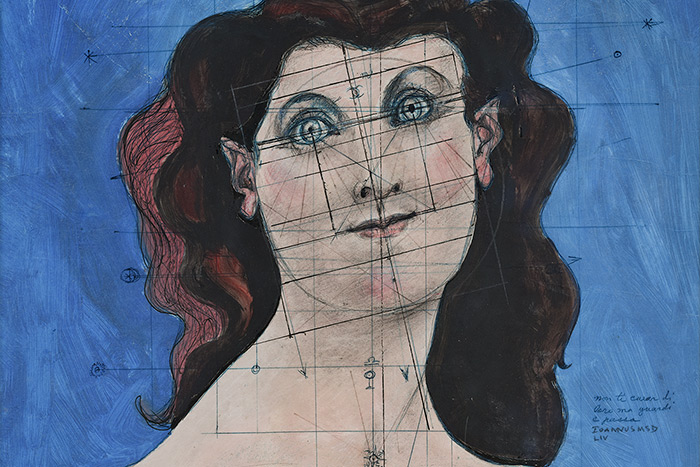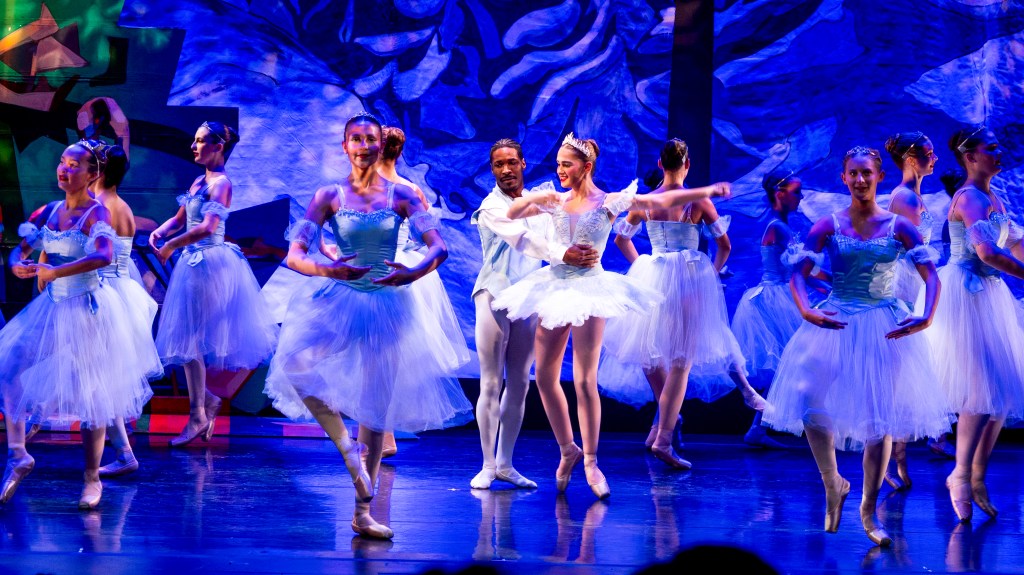Discover John Graham: Maverick Modernist at the Parrish Art Museum

Postmodern and/or contemporary art oftentimes leaves casual art observers scratching their head, asking the question, what is art? At the Parrish Art Museum in Water Mill, where Postmodern art exhibitions are a regular occurrence, there was once a sort of maze, which museum goers walked through in one gallery; once, a series of televisions displayed nothing more than a set of lips mouthing words; on several occasions visitors were confronted with a canvas covered in different colored squares aptly title, “Untitled.” To be clear, none of this is to say that those pieces are not art. Only that a casual visitor to art museums and galleries (this reviewer included) are sometimes not equipped with the correct context or vocabulary and/or level of appreciation needed to see a contemporary work of art and be moved by it, let alone understand its artistic merits.
The Parrish’s newest exhibition, John Graham: Maverick Modernist is a nearly perfect balance between what a casual American museum-goer might consider art and what might leave them befuddled. Graham, born Ivan Dombrowski in 1886 in Kiev, was a Modernist painter. For those without the aforementioned vocabulary, Modernism can be loosely defined by the artists casting aside religious or mythological narrative scenes in favor of exploring their own experiences as avenues for creativity—and doing so in experimental ways using new techniques, media and non-traditional materials. Think Mattisse with his strong and expressive colors, or Picasso and his Cubism—all of which influenced the young Graham, whose short 1937 essay, “Primitive Art and Picasso,” Jackson Pollock is said to have read obsessively.
Graham, a cavalryman trained in law, fought against, then fled, the Bolshevik regime in Russia before landing in New York in 1920. There he gave riding lessons until he decided to pursue his lifelong ambition and enrolled in the Arts Students League to study art. From there he became a sort of bridge from Mattisse and Picasso to what would come next, one foot firmly planted in the Old World and one crossing over into an exciting “new world.” In addition to painting, Graham was also a collector, writer, theorist and advisor, helping create what’s considered one of the finest collections of modern French art in the country for the Cone sisters of Baltimore, as well as former Vanity Fair editor and art collector Frank Crowinshield’s collection of African art.
Seemingly from the moment Graham landed in New York, he was involved, in one way or another, in the burgeoning American art scene. Alicia Longwell, chief curator at Parrish, notes that Graham “kept coming up ‘Zelig-like’ in every well-known circle of the period” in one of her graduate classes, “Circles of Influence in American Art 1900-1950.” She continued, “Graham remains important for his influence in the period and for the substantial body of work he created—well-known in his day and continuing to be of great interest to artists today.”
The exhibition, on display through July 30, is organized in chronological order, beginning with “Self-Portrait,” the 1923 work painted during Graham’s first year of formal art study, and follows his work through the time he spent in Paris where his style became decidedly more abstract—a progression you might notice by comparing 1928’s “Coffee Cup” with 1930’s “Lunchroom Coffee Cup,” both not far from another favorite, “Table Top Still Life With Bird” from 1929. As for Longwell’s favorite, she says, “Curators, like parents, aren’t supposed to chose favorites.” She confesses, however, that she’s “drawn to the minimalist still lifes from the late ’20s and early ’30s, which are wonderful studies in tones of white and pastel colors.”
Across the hall, the exhibition shows the artist’s shift from more abstract and still life work, and his allegiance to Picasso, to a more classic approach with Renaissance-inspired historical portraits—though with some Graham-esque special touches. Included among these is a handful of cross-eyed women, another woman with decidedly too much mascara, and a plethora of astrological references throughout several other works, most prevalent in “Head of a Woman” from 1954. Close to the end of the exhibit, 1959’s “Self-Portrait as Warrior,” struck this museum-goer as a moment of discovery. Graham was not simply an artist, but a soldier for art, an artist’s artist, one who was never afraid to contradict himself, was always willing to push the envelope and seemed to live and breathe for art.
In all, more than 60 pieces of art, both paintings and a selection of important works on paper, make up this extraordinary exhibition. Also included are journals with drawings by Graham; his four-page treatise on Picasso, “The Case of Mr. Picasso;” two copies of his 1937 books written in Socratic dialogue, System and Dialectics of Art and other documents. This exhibition is a rare and special opportunity to see the work of such an important American artist in depth. It’s the first full-scale museum retrospective of the Graham’s work in 30 years, and is “likely to be the only one for the next 30,” Longwell says, adding, “It’s so difficult to gather an array of work like this.” She should be commended for doing so.
What might interest East Enders most about this exhibition is Graham’s connection to those artists we like to claim as our own: Graham called Willem de Kooning one of the “outstanding American painters” who was “just as good…as the leading artists of the same generation in Europe.” Graham is also believed to be the first person to show Pollock at a 1942 exhibition in Manhattan, where Pollock and his wife, Lee Krasner, first met. When asked if Graham discovered Pollock, de Kooning responded, “Of course he did!”
Now it’s your turn to discover Graham. No matter what your idea of art is, it can be found in the work of this maverick Modernist. Even those who already know Graham’s work, Longwell insists, will be astounded. “Photographs just don’t do justice to the subtleties and nuances of texture and color in the work.”

Don’t forget to buy some souvenirs on the way out. The exhibition catalogue, which includes three essays, a chronicle of his life and work more complete than what is shown at the exhibit, every painting reproduced in beautiful detail, and the full text of Graham’s essay “Primitive Art and Picasso,” is a must-buy.
John Graham: Maverick Modernist is on display through July 30 at the Parrish Art Museum, 279 Montauk Highway, Water Mill. 631-283-2118, parrishart.org.









